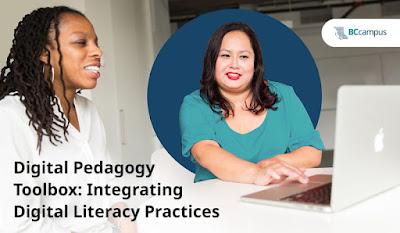There has been much conversation about how generative AI should be cited in written work. I recently wrote an article for BCcampus and leveraged ChatGPT for one of the sections specifically to assist in building on my key ideas and in generating some of the scenarios.
There were no existing author-writing guidelines or policies at BCcampus that permitted or prohibited the use of AI tools (at the time of writing the article). But as the author, it was important for me to be ethical and transparent about my writing work and take full accountability and responsibility for my ideas. And I was supported and encouraged by the team at BCcampus to do so.
Based on my limited research on how AI is cited in scientific writing, I wanted to acknowledge the use of ChatGPT as a ‘method’ of research used for a specific section. I also referred to Canada’s Guide on the use of Generative AI and the “FASTER” principles.
This is the reference that I crafted and we decided to include it in the section for which ChatGPT was leveraged:
My intent in including this paragraph was to promote the responsible, transparent, and ethical use of AI in my writing. Some may find this useful; some may find it unnecessary or something that can be omitted or perhaps even ignored.
What do you think of this reference? Do you use ChatGPT for your work? How are you including it in the reference? What are some guidelines and principles you are following in using it fairly and transparently?
PS: If you are interested in reading the article I wrote, you can find it here:
https://bccampus.ca/2023/11/15/digital-pedagogy-toolbox-integrating-digital-literacy-practices/
The article highlights how educators and learners can develop digital competencies and skills by using the B.C. Post-Secondary Digital Literacy Framework as a roadmap. It explore the key facets of digital literacy in the context of the Digital Literacy Framework with a scenario that highlights practical strategies for how digital literacy can be implemented into every aspect of the learning journey by educators and learners. ChatGPT was used to assist in building on my key ideas and generating some of the digital literacy application scenarios.
The BCcampus Open Education Team has since released its guidelines on leveraging generative AI tools for OER content creation.
#ChatGPT #AIEthics #AIGuidelines #AIForWork #Writing #ArticleWriting #CitingAI #AIReference

.png)
